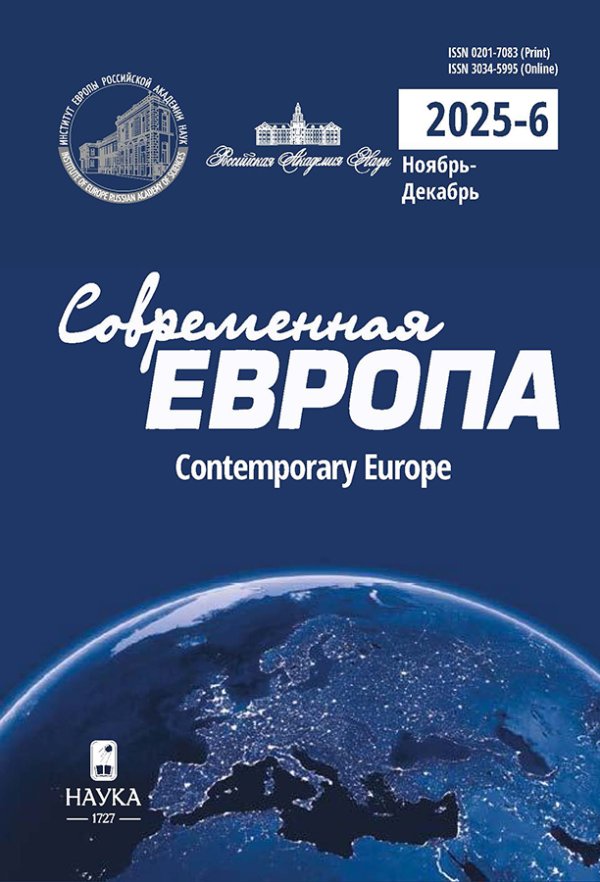Intellectual Property Rights Protection Mechanisms Harmonization in the EAEU Preferential Trade Agreements
- Authors: Onufrienko K.V1
-
Affiliations:
- MGIMO
- Issue: No 3 (124) (2024)
- Pages: 209-219
- Section: Articles
- URL: https://journals.rcsi.science/0201-7083/article/view/260319
- DOI: https://doi.org/10.31857/S0201708324030173
- ID: 260319
Cite item
Full Text
Abstract
About the authors
K. V Onufrienko
MGIMO
Email: kseniia.onufrienko@gmail.com
Postgraduate Moscow, Russia
References
- Балашова А.И. (2021) Особенности правового статуса субъектов прав на селекционные достижения. Журнал Суда по интеллектуальным правам. № 3(33). С. 178—184.
- Глотов С.А., Губин А.Н., Слепко Г.Е., Губин М.А. (2017) Прикладные проблемы оптимизации защиты интеллектуальной собственности в ЕАЭС и Российской Федерации. Современные информационные технологии и ИТ-образование. № 13(3). С. 214—221.
- Зыонг Т.Ж. (2004) Правовая охрана новых сортов растений во Вьетнаме. Дис. ... канд. юрид. наук. Российский государственный институт интеллектуальной собственности. Москва. 154 с.
- Крупко С.И. (2018) Деликтные обязательства в сфере интеллектуальной собственности в международном частном праве. Статут. Москва. 279 с.
- Мадиярова Д.М., Терлецкий М.В. (2022) Взаимная товарная торговля России со странами ЕАЭС в условиях глобальной трансформации XXI века. Научные труды Вольного экономического общества России. № 235. С. 345—356.
- Напалкова И.Г. (2018) Формально-юридический метод как основа методологии юридического позитивизма. Философия права, № 3(86). С. 7—12.
- Ремчукова В.К. (2015) Особенности распространения преференциальных торговых соглашений на современном этапе. Региональные проблемы преобразования экономики. № 8. С. 121—131.
- Шугурова И.В. (2021) Направления совершенствования таможенной защиты прав на объекты интеллектуальной собственности в рамках ЕАЭС. Журнал Суда по интеллектуальным правам. № 3(33). С. 21—32.
- Bhagwati J.N., Panagariya A. (1996) The Theory of Preferential Trade Agreements: Historical Evolution and Current Trends. American Economic Review. No. 86(2). P. 82-87.
- Blandy S. (2014) Socio-legal approaches to property law research. Property Law Review. No. 3(3). P. 166-175.
- Dadush U., Dominguez Prost E. (2023) Preferential Trade Agreements, Geopolitics, and the Fragmentation of World Trade. World Trade Review. No. 22(2). P. 278-294.
- Gottwald J., Buch L.F., Leal Filho W. (2013) Technology Transfer. Encyclopedia of Corporate Social Responsibility. Ed. by S.O. Idowu, N. Capaldi, L. Zu, A.D. Gupta. Springer, Berlin, Heidelberg, Germany. P. 2503-2511. DOI: https://doi.org/10.1007/978-3-642-28036-8_673
- Hou Y. (2019) Protecting New Plant Varieties in China and Its Major Problems. Innovation, Economic Development, and Intellectual Property in India and China. Ed. by K.-C. Liu, U.S. Racherla. Springer, Singapore, Singapore. P. 327-346. DOI: https://doi.org/10.1007/978-981-13-8102-7
- Raizada G., Dhillon S.S. (2017) Impact of Intellectual Property Rights on International Trade: Evidence from India. Journal of Intellectual Property Rights. No. 22. P. 200-210.
- Yao, X., Zhang, Y., Yasmeen, R., Cai, Z. (2021) The impact of preferential trade agreements on bilateral trade: A structural gravity model analysis. PloS one. No. 16(3). doi: 10.1371/journal.pone.0249118
- Balashova A.I. (2021) Osobennosti pravovogo statusa sub’ektov prav na selekcionnye dosti-zheniya [Distinctive features of the legal status of the selection achievements rights holders], Zhurnal Sudapo intellektual'nympravam, 3(33), pp. 178-184. (In Russian).
- Bhagwati J.N., Panagariya A. (1996) The Theory of Preferential Trade Agreements: Historical Evolution and Current Trends, American Economic Review, 86(2), pp. 82-87.
- Blandy S. (2014) Socio-legal approaches to property law research, Property Law Review, 3(3), pp. 166-175.
- Dadush U., Dominguez Prost E. (2023) Preferential Trade Agreements, Geopolitics, and the Fragmentation of World Trade, World Trade Review, 22(2), pp. 278-294.
- Glotov S.A., Gubin A.N., Slepko G.E., Gubin M.A. (2017) Prikladnye problemy optimizacii zashchity intellektual'noj sobstvennosti v EAES i Rossijskoj Federacii [Applied problems of optimizing the protection of intellectual property in the EEU and the Russian Federation], Sovremen-nye informacionnye tekhnologii i IT-obrazovanie, 13(3), pp. 214-221. (In Russian).
- Gottwald J., Buch L.F., Leal Filho W. (2013) Technology Transfer, in Idowu S.O., Capaldi N., Zu L., Gupta A.D. (ed.) Encyclopedia of Corporate Social Responsibility, Springer, Berlin, Heidelberg, Germany.
- Hou Y. (2019) Protecting New Plant Varieties in China and Its Major Problems, in Liu KC., Racherla U.S. (ed.) Innovation, Economic Development, and Intellectual Property in India and China, Springer, Singapore, Singapore.
- Krupko S.I. (2018) Deliktnye obyazatel'stva v sfere intellektual'noj sobstvennosti v mezhdu-narodnom chastnom prave [Tort liabilities in the field of intellectual property in international private law], Statut. Moscow, Russia. (In Russian).
- Madiyarova D.M., Terletskiy M.V. (2022) Vzaimnaya tovarnaya torgovlya Rossii so stranami EAES v usloviyah global'noj transformacii XXI veka [Mutual commodity trade of Russia with the EAEU countries in the context of the global transformation of the XXI century], Nauchnye trudy Vol'nogo ekonomicheskogo obshchestva Rossii, 235, pp. 345-356. (In Russian).
- Napalkova I.G. (2018) Formal'no-yuridicheskij metod kak osnova metodologii yuridicheskogo pozitivizma [Technic method as a basis of the methodology of legal positivism], Filosofiya prava, 3(86), pp. 7-12. (In Russian).
- Raizada G., Dhillon S.S. (2017) Impact of Intellectual Property Rights on International Trade: Evidence from India, Journal of Intellectual Property Rights, 22, pp. 200-210.
- Remchukova V.K. (2015) Osobennosti rasprostraneniya preferencial'nyh torgovyh soglashenij na sovremennom etape [The typical features of the spread of preferential trade agreements in the modern period], Regional'nye problemy preobrazovaniya ekonomiki, 8, pp. 121-131. (In Russian).
- Shugurova I.V. (2021) Napravleniya sovershenstvovaniya tamozhennoj zashchity prav na ob’ekty intellektual'noj sobstvennosti v ramkah EAES [Directions for improving intellectual property rights customs protection within the EAEU], Zhurnal Suda po intellektual'nym pravam, 3(33), pp. 21-32. (In Russian).
- Yao X., Zhang Y., Yasmeen R., Cai Z. (2021) The impact of preferential trade agreements on bilateral trade: A structural gravity model analysis, PloS one, 16(3). doi: 10.1371/journal.pone.0249118
- Zyong T.Zh. (2004) Pravovaya ohrana novyh sortov rastenij vo V'etname [New plant varieties legal protection in Vietnam], PhD. Thesis, Moscow, Russia. (In Russian).
Supplementary files










